
Last night at 10pm we crossed the Equator. Finally a beautiful night sail, the sort you dream about, with the new moon over to the West and the constellation Taurus and Pleiades to the East, sailing along at a sweet 3.5 knots on a calm sea. We drank some rum to the occasion and hoped that now we had entered the Southern Hemisphere the weather would be nicer, a fresh start.
It has been a hard month since the launching in Panglao. As is usual with a new boat the weather and sea Gods set out to test her and the new crew. We certainly got a testing. That first night has been described before, it was horrid, James and I had never experienced such rough, lumpy seas with such relatively light wind before. With the decks like a skating rink with the coating of coconut oil, the new sailrig and steering paddles, it gave us and the boat the best testing we could have asked for, though it did leave everyone shattered. It showed up every little problem that had to be solved before setting off offshore.
On Lapita Anuta we had changed to the small mizzen early and had angled the foremast leaning forward, which gave a better balance and made stresses on steering paddles and the crew less. By morning we knew we had to make harbour and reassess the boat and find out how Lapita Tikopia had fared. We were able to sail due North straight to a wonderful little Philippine fishing harbour called Luay on the South coast of Bohol. We sailed into the river mouth and moored in flat water near many local fishing Bankas.
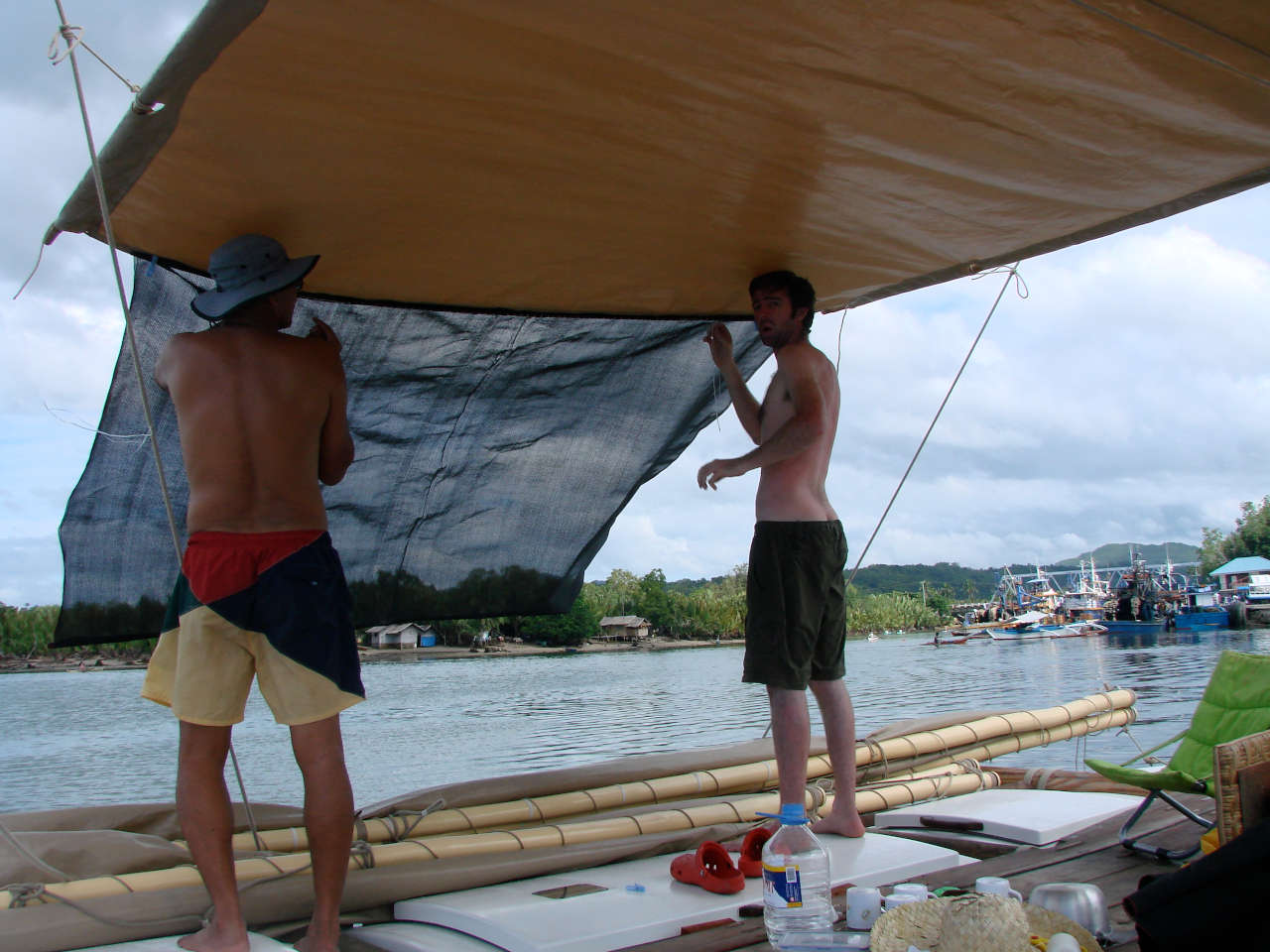
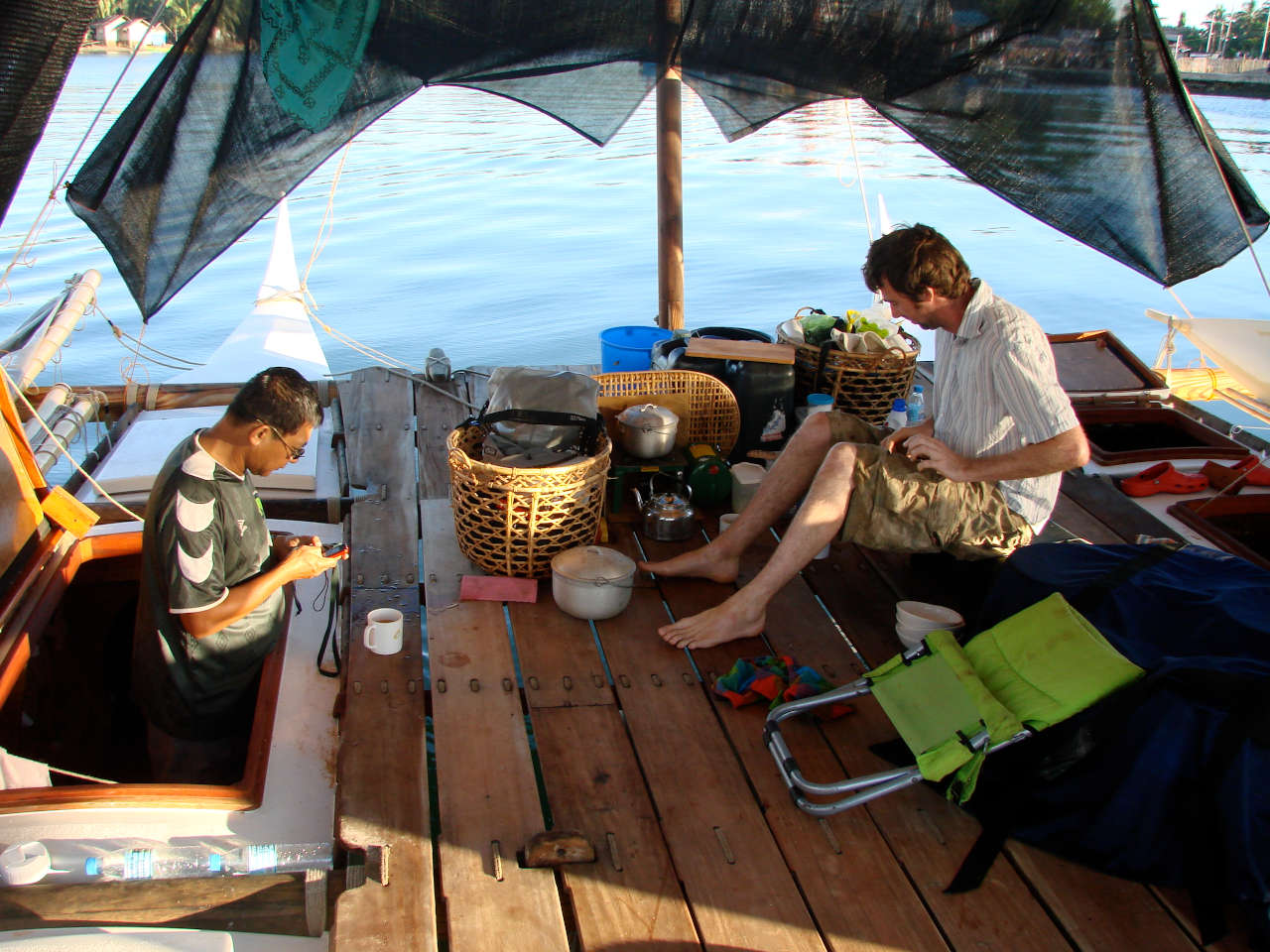
In Luay we started to make Anuta our home. We improved the sun awning with shade netting extensions. We started cooking on deck as the tiny galley below was too hot and dangerous with the temperamental primus stove. I designed a 'cookbox' and sent the drawing to the boatyard, where two of these were produced in record time. The box also has a storage compartment for the dinghy outboard motor.
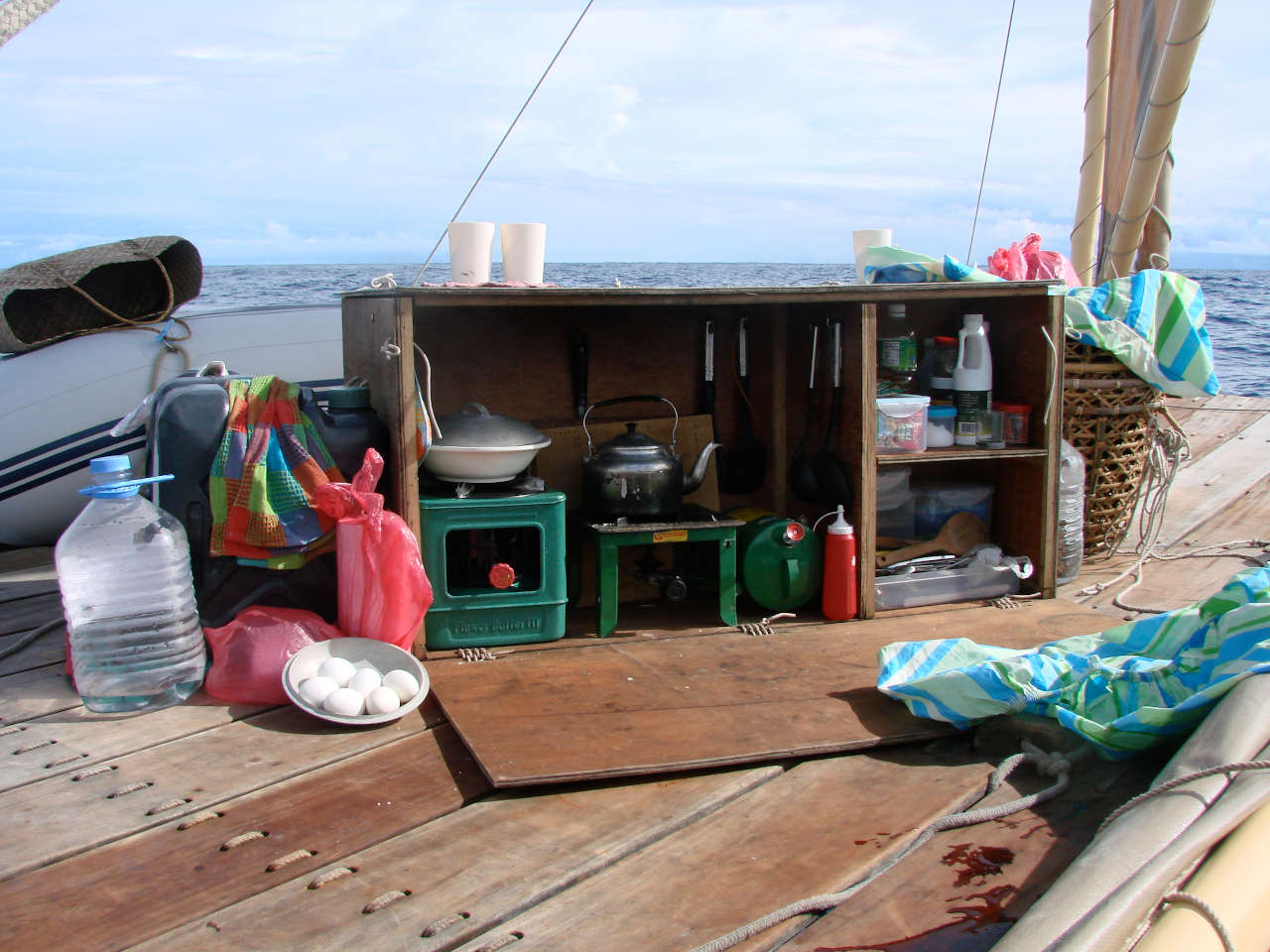
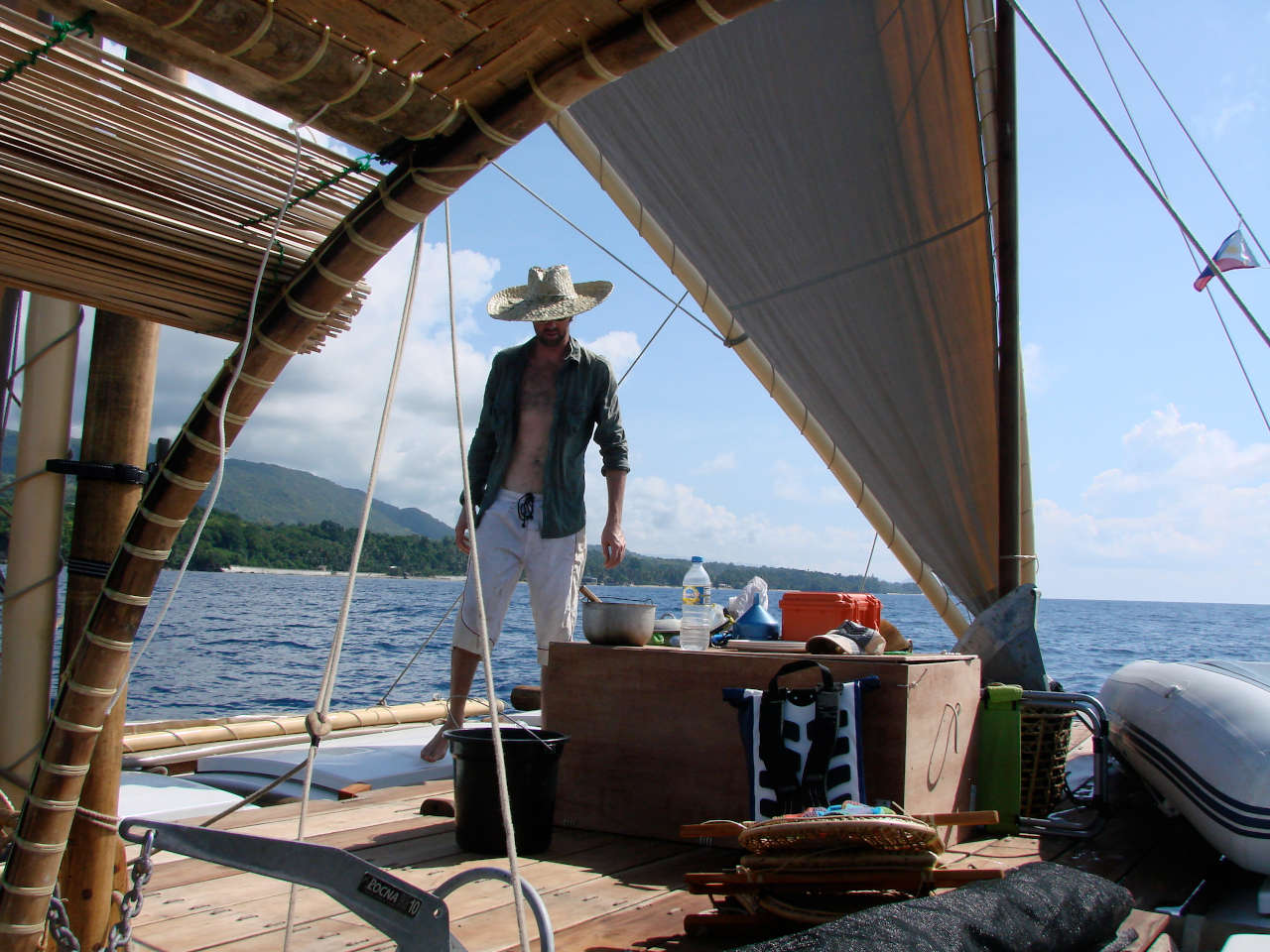
The crew on our boat were James (the 'Admiral'), myself (the 'skipper'), Matt (the freelance camera man and hard working crew) and the fourth was a Filipino scientist from Manila National Museum. He had been invited to sail with us only the week before the launching Ceremony. Dr. Eusebio Dizon (better known as Dr. Bong) is a highly respected underwater archaeologist, who has written many papers on the ships found round the Philippines. He is also an experienced field worker and though he had never sailed before, made a wonderful crew on our boat. That first horrid night he stayed calm and happy in spite of being doused in seawater in his bunk. Once in Luay he quickly settled into our primitive boatlife, helped with the sewing of the awing, was an expert at lighting the primus stove to make cups of tea and got up in the early morning to arrange buckets to collect rainwater.
While Matt and I travelled two days by bus to Panglao to help with work on Lapita Tikopia, James and Bong had a continuous seminar, discussing seagoing Mankind from thousands of years ago, to the fascinating finds of ships carrying Chinese ceramics from the 14th Century. We were sorry Bong had to leave us after just one more nice day sail along the Bohol coast. That nice daysail along the coast and the day after were the only nice sails for the next two weeks.
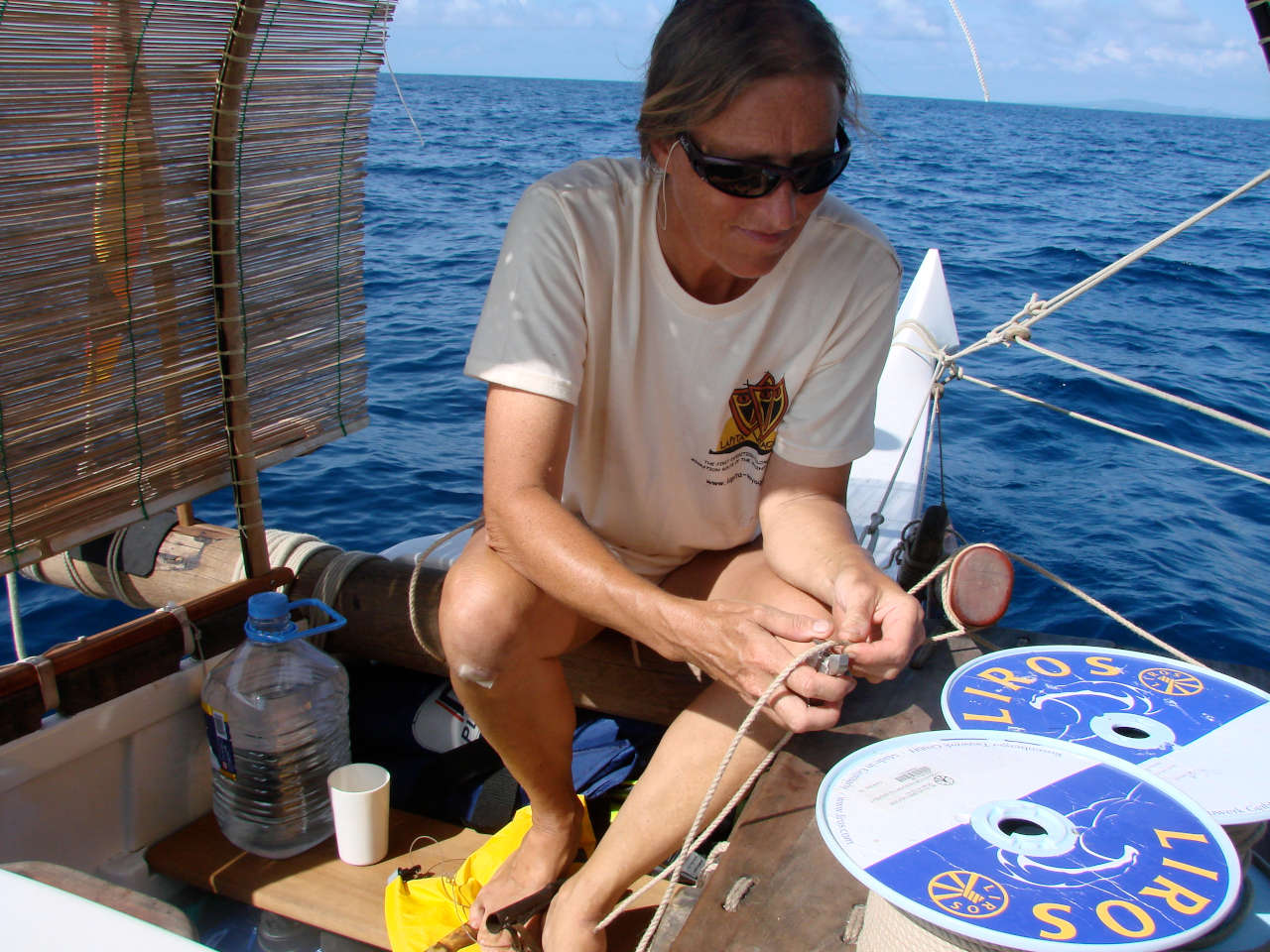
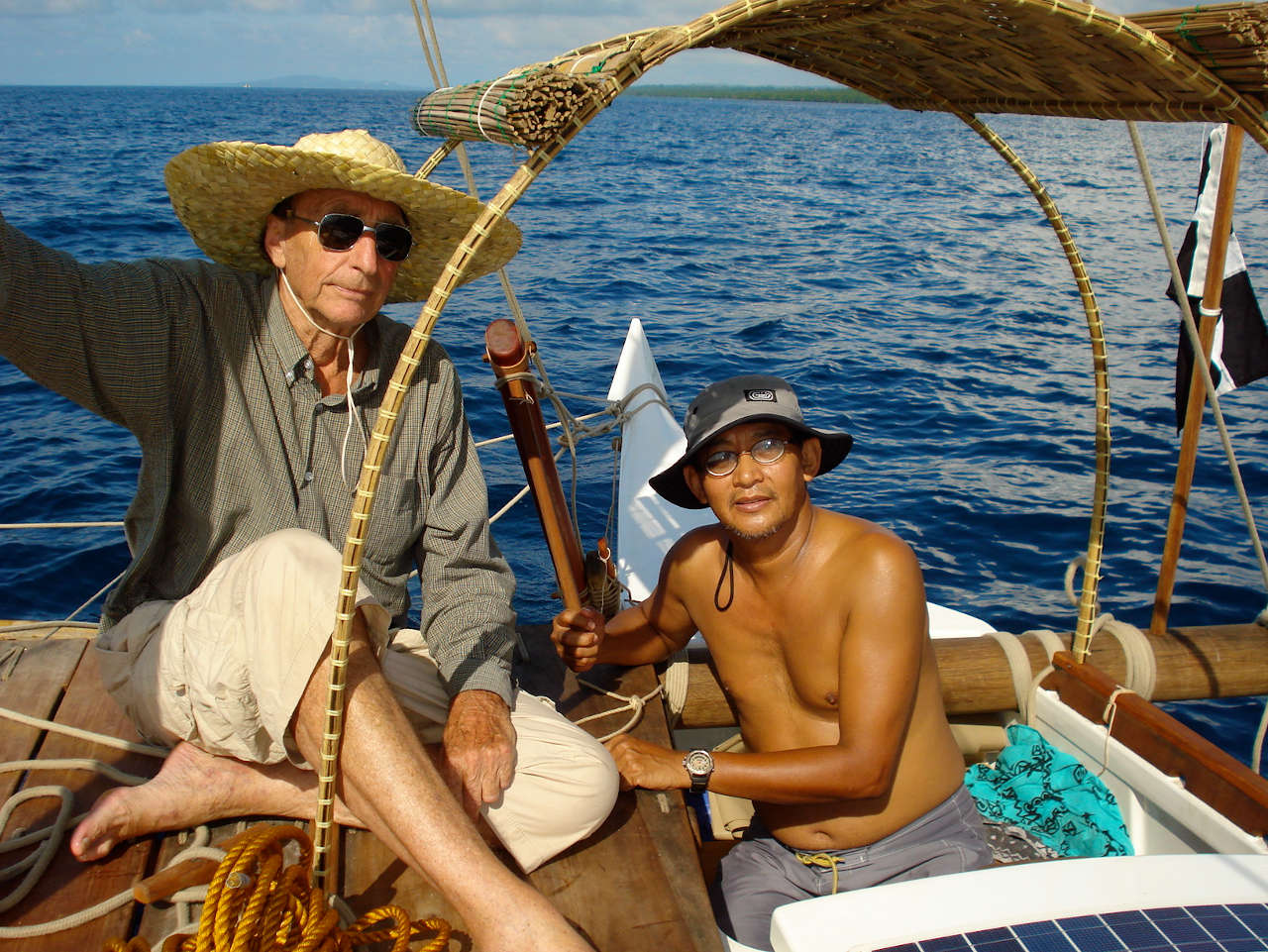
Our attempt to reach the town of Surigoa on the North tip of Mindenao was a huge struggle against contrary winds and current. After two days with squalls and rain and getting close to the Mindenao NW coast, we were driven back by wind and current and it took us another 24 hours to reach the little bay at Pintuan. It did give us a lot more experience in sail handling and sail changes.
The only option to get round the North tip of Mindenao and through the narrow straights was to find a tow, or we might have to wait weeks for a favourable wind, for which we did not have the time.
In Surigao we arranged a tow by two Bankas (the double outrigger canoe of the Philippines. The word Banka has the same root as Wanka, Waka, Vaka, Va'a, all meaning boat/canoe in Polynesian languages.) We also devised a new tightening system for the steering paddles, using a 'Spanish Windlass' along the side of the cockpit. This has proved itself and allows us to pull the lower part of the paddle in really tight, even at speed. This prevents chafe, as soon as there is some slack in the rope it starts to chafe, but if pulled up tight it does not.
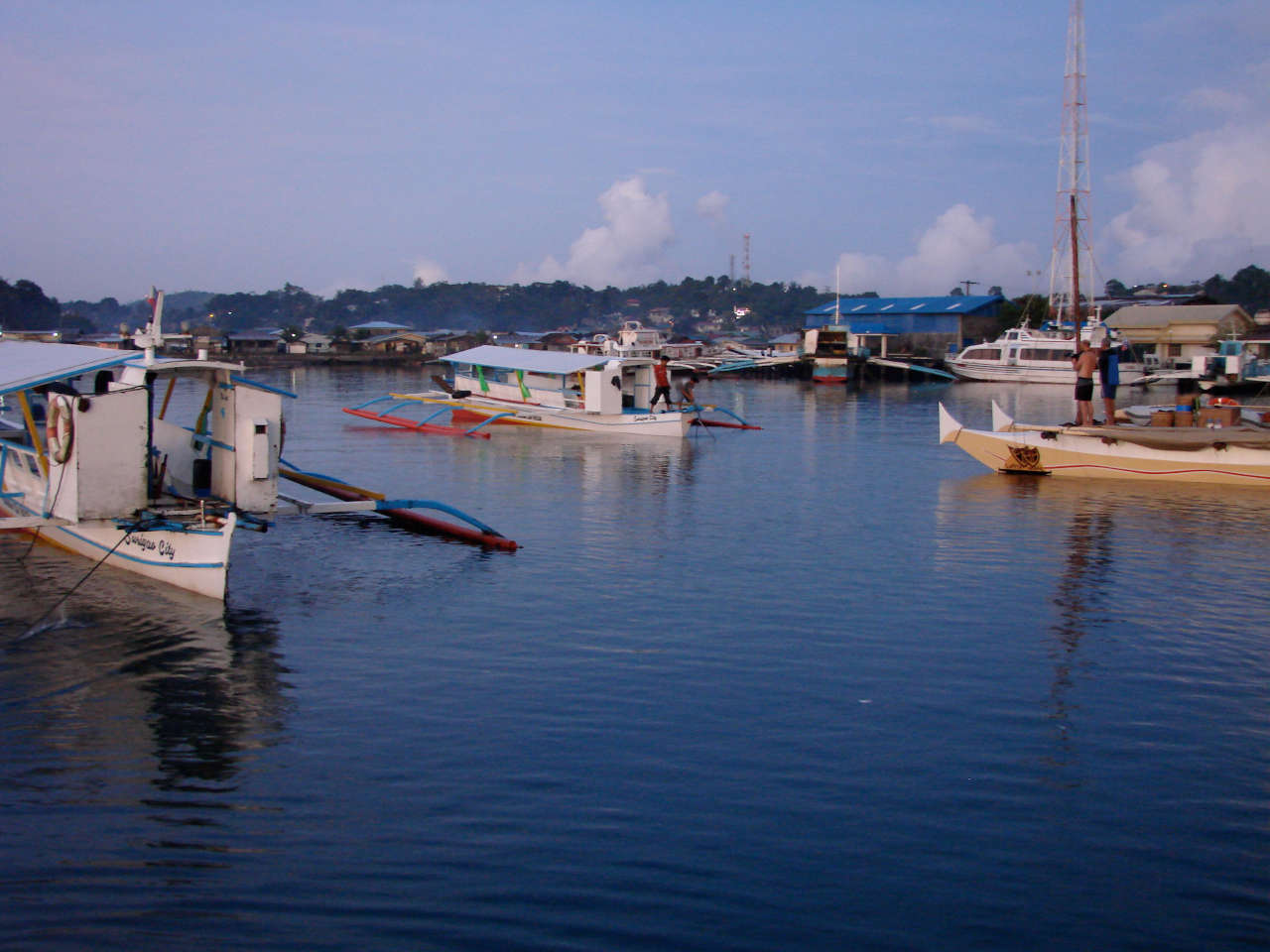
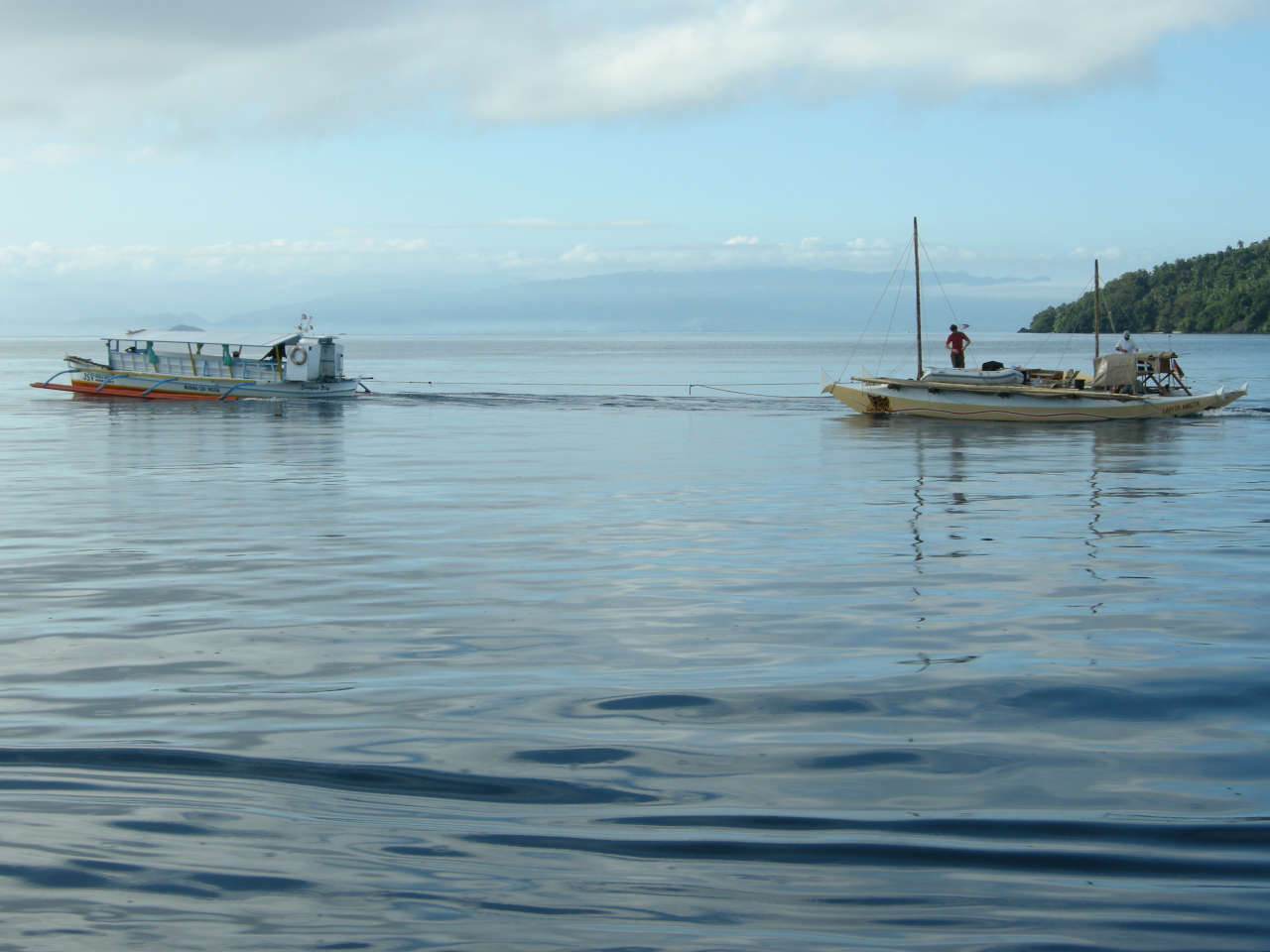
Within a few hours of being released by the towing Banka into the Pacific Ocean swell, we met our first squall to which we dropped all sail and lay ahull, then a spell of hardly any wind and so it went on. After 24 hours one rudder was suffering chafe and we made a new knot, the Spanish Windlass worked well to retighten the system, by mid day on the second day we got a really hard wind squall and again dropped all sail, the boat again drifted beam on. We did some work on the rigging and as we were about the hoist sail again, another worse squall came in, we tried to hoist our little storm sail, but even that was too much, the rain beat down on fierce, rapidly increasing waves with big white caps, so we lay ahull hoping it would subside.
I checked the GPS position and found we had been set closer inshore by the last squall and with this wind would not be able to clear the large reef off the coast just to the South of us. We made a quick decision that the only prudent move was to head straight West into Bislig Bay and find shelter. Bislig Bay is like a 5Nm deep rectangle cut into the coast, we ran under tiny stormsail before the Easterly wind with huge waves following. The visibility was bad, rainqualls obscured the coast, but we could see the long manmade harbour wall behind which we intended to anchor. We sailed into shelter and dropped anchor by some little fishing Bankas.
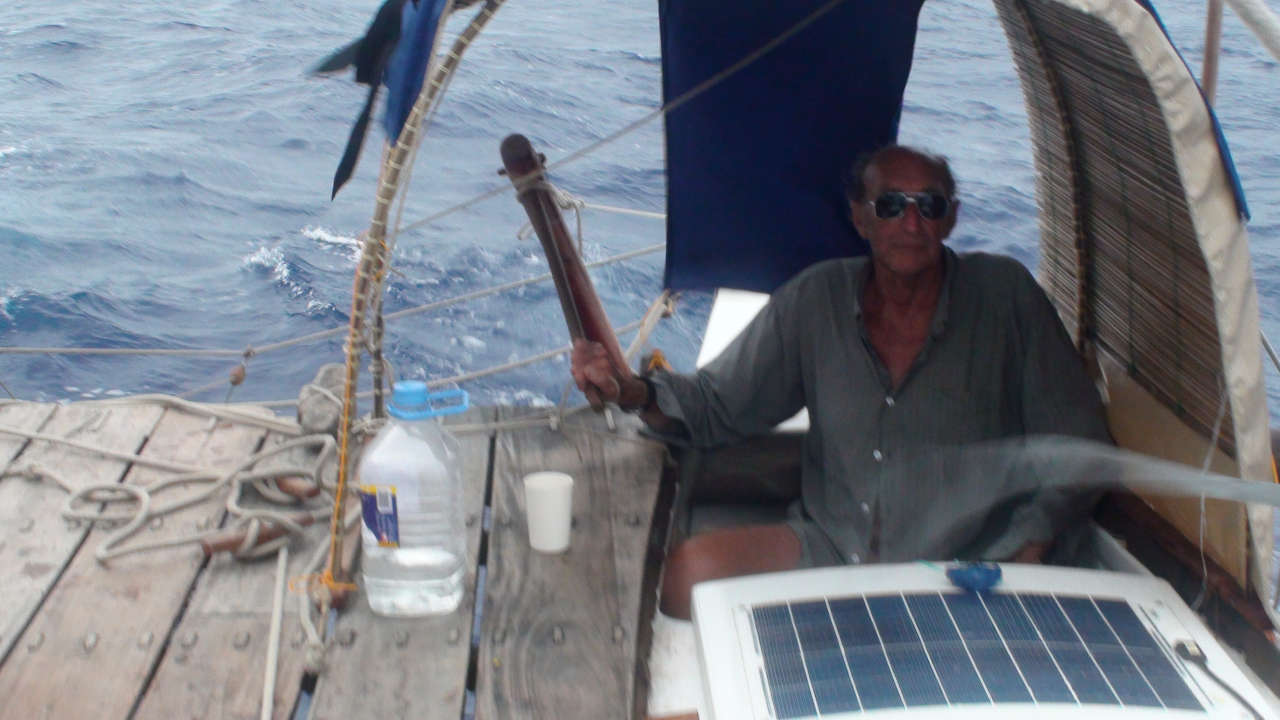
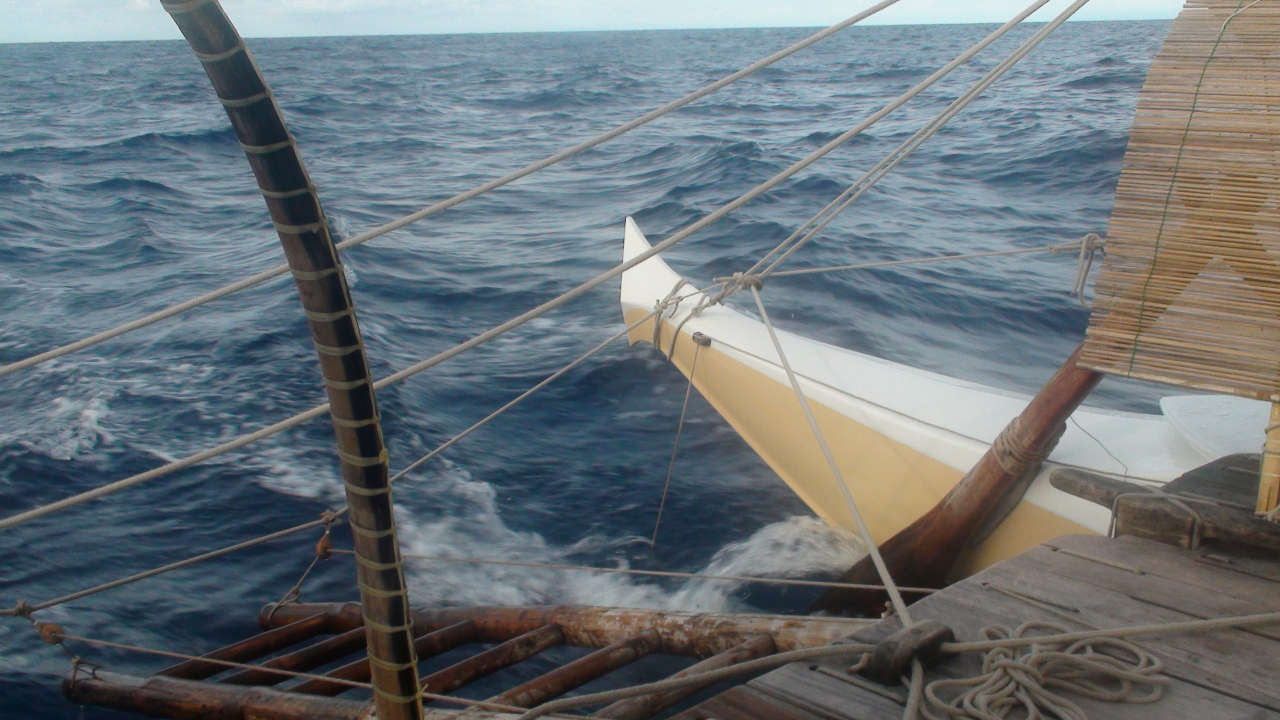
It rained all night and next morning, we cooked food under the awning which we had set really low over the deck and cookbox. A tot of rum cheered us up and we were very pleased to be in shelter. At least all the water containers were refilled by morning! We were worried about Klaus and Lapita Tikopia and hoped they were South of the reef by the time the squall/gale came in. The next morning we got the message that they had arrived safely, but exhausted at our arranged meeting point further South.
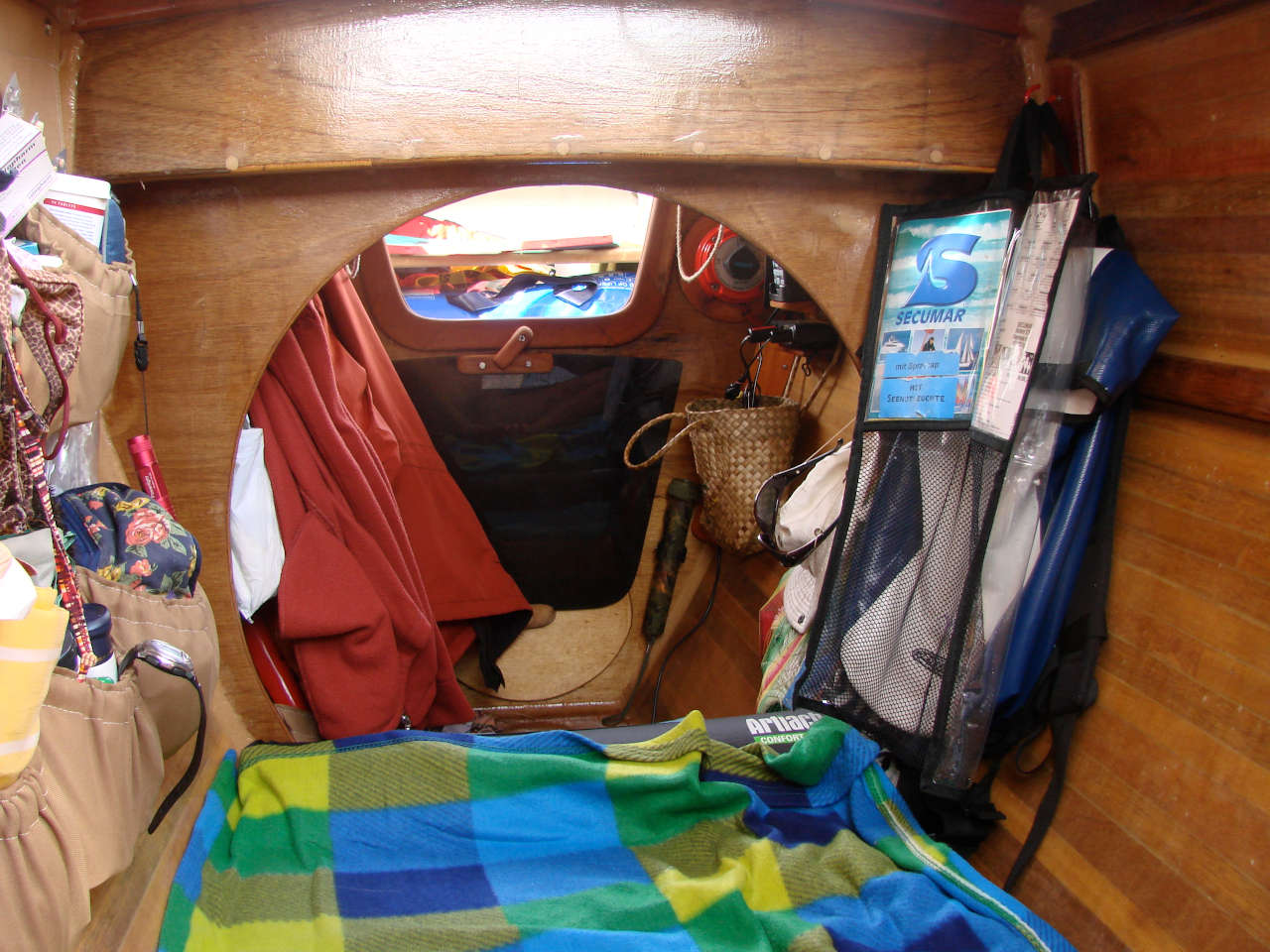
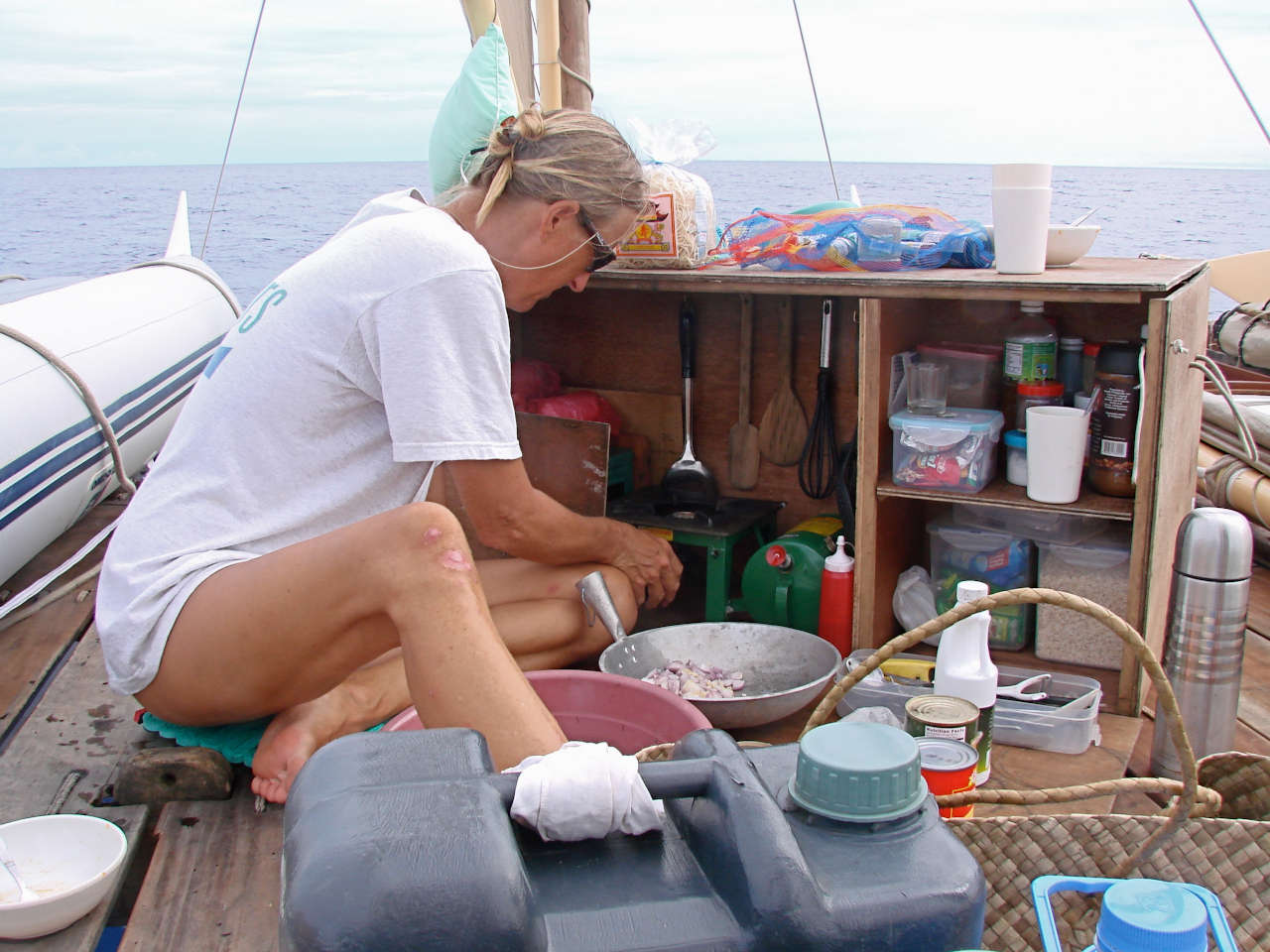
We left Bislig Bay in the early afternoon (20/11) while the wind was blowing from the West and the tidal current was favourable, still raining. That following night the weather got better and we had a more peaceful sail, the next day even better and we were able to air all the cabins and wet clothes. Towards sunset we were close to the bay where Tikopia had sheltered. They set off to join us on our way South.
Soon after they set sail we lost contact and we did not hear from them again until we arrived in Ternate nearly 400Nm later.
These 400Nm took us five and a half days non-stop, approx. 3 knots average speed, we had very changeable weather with lots of rain and squalls and very dark nights as the moon was waning fast, it was hard and tiring sailing.
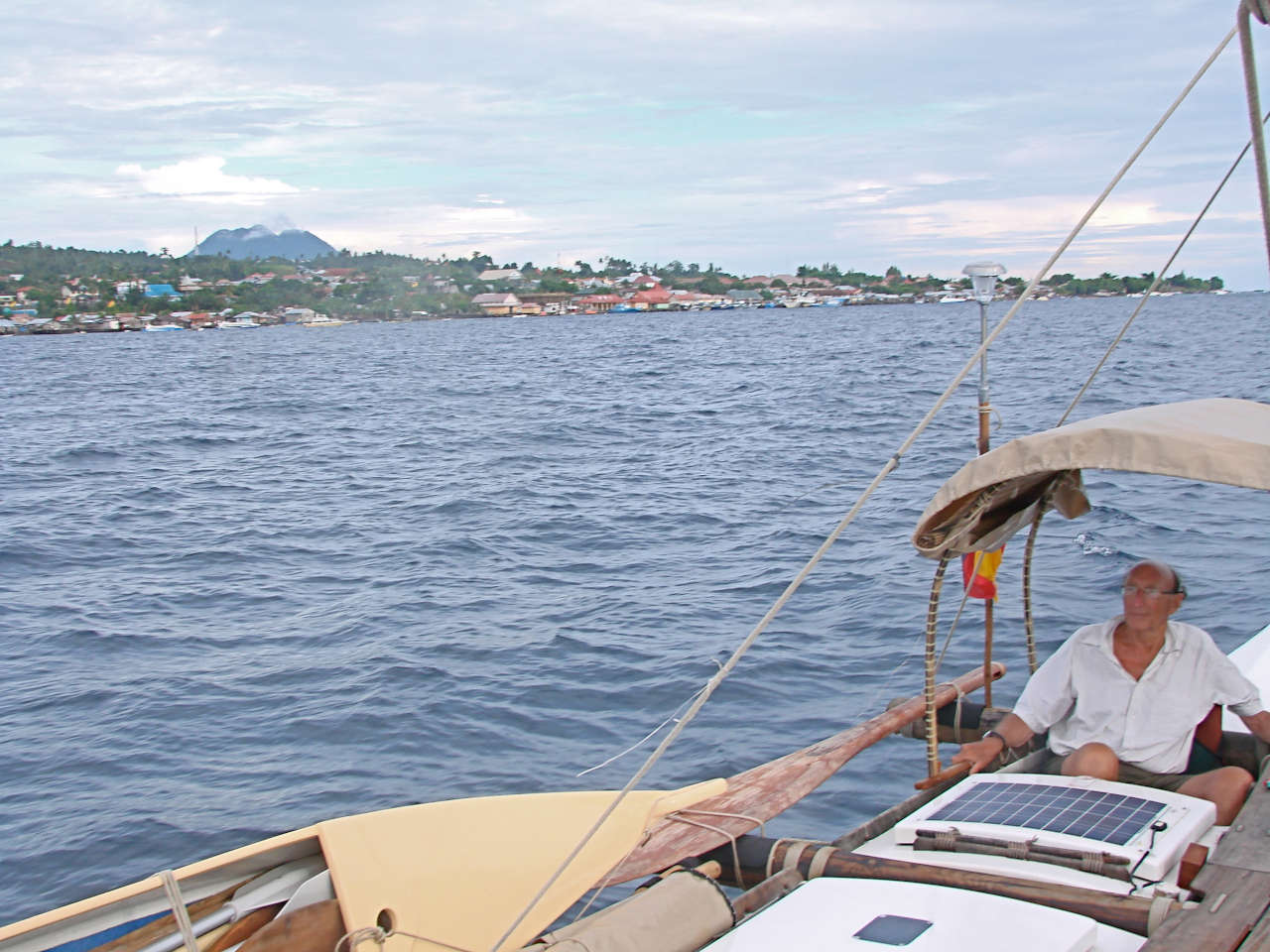
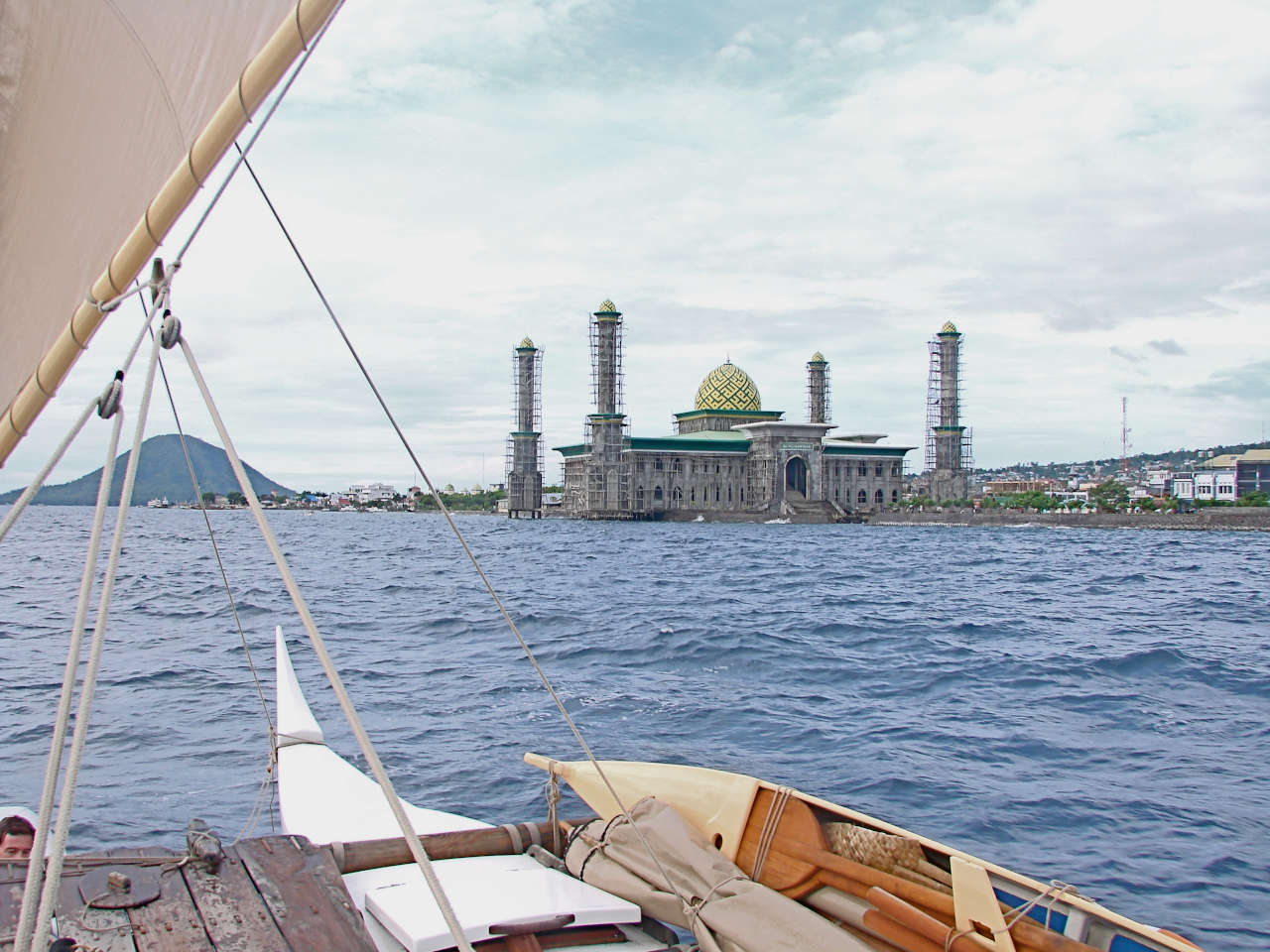
To our surprise we found we were the first to arrive in Ternate, a not very glamorous town, with lots of little kids swimming and screaming round the boat all day. We were glad to hear Lapita Tikopia was close by and to see her sail in at sunset.
Now with a new crew we are coasting down the West side of Halmahera. Tomorrow we start more long passage making to New Guinea. The schedule is still very tight!
- Hanneke Boon
